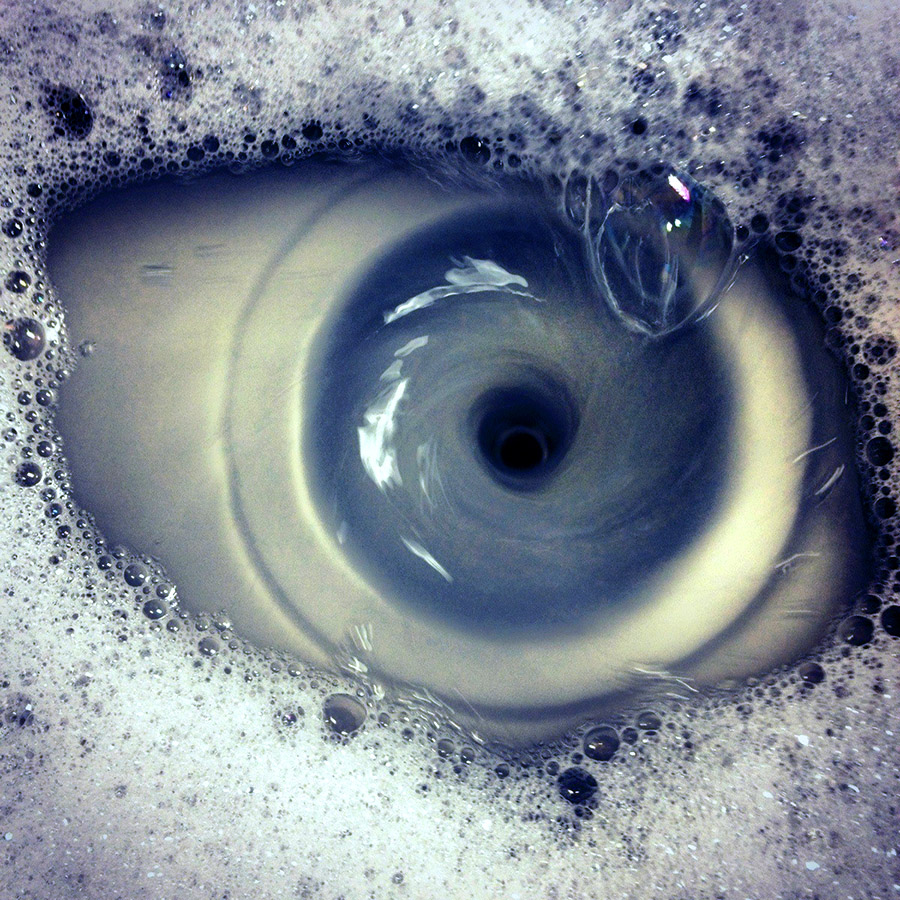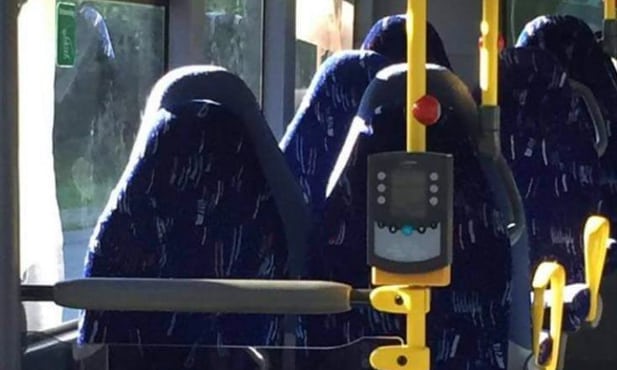Pareidolia - Seeing False Patterns in Random Data
Faces in Toast, Bible Codes and Conspiracy Theories
https://www.humantruth.info/pareidolia.html
By Vexen Crabtree 2016
The cognitive process of seeing patterns in ambiguous data is called apophenia. When it happens with images or sound, it is pareidolia. They're common 'errors in perception'1. The cause is partly biological. A part of our brain, the fusiform face area, actively looks for shapes, lines or features that might possibly be a human face. It does so devoid of context, and reports with urgency and confidence when it thinks it has results. That's why most pareidolia involves the perception of human forms in messy visual data. It "explains why some people see a face on Mars or the man in the moon [... or] the image of Mother Teresa in a cinnamon bun, or the Virgin Mary in the bark of a tree"2. Auditory pareidolia is responsible for when we mistake a whistling breeze for a whispering human voice. When people listen with expectation of hearing a voice they will hear spoken words in pure noise3.
We often misperceive random events in a way that supports our own already-existing beliefs or hunches4 and it goes against our feeling of common-sense to even consider our perception wrong. Psychologist Jonah Lehrer says "the world is more random than we can imagine. That's what our emotions can't understand"5. The tendency for people to see more order in nature than there is was noted as long ago as the thirteenth century by Roger Bacon - he called such errors due to human nature the 'idols of the tribe'6. To study pareidolia sociologists have presented true sets of random results and analysed subject's responses to them. Coin flips, dice throws and card deals have all revealed that we are naturally prone to spotting illusory trends7. Pareidolia results in superstitions, magical thinking, ghost and alien sightings, 'Bible codes', pseudo-science and beliefs in all kinds of religious, nonsensical and supernatural things7,8,9.10





In the images above, spot Jesus in the rear end of a dog, soapy water draining down a sink looking like an eye, two gremlin peppers, a very angry mop and some empty bus seats that a group of racists mistook for Muslim women wearing Burkhas (causing them to spew 27 pages of vile over the Internet).
- Apophenia
- Auditory Pareidolia
- Detecting False Patterns in Random Sequences
- Hyperactive Agent Detection Device (HADD)
- Seeing What You Want to See: Racists Mistake Bus Seats for Burkha-Wearing Terrorists
- Links
1. Apophenia
#apophenia #psychology #science
“Pattern recognition is the basis of all aesthetic enjoyment, whether it is music, poetry or physics. As we become more sophisticated in what we do, we learn to recognize ever more subtle patterns. Unfortunately, the brain that makes the link between the tides and the phases of the moon may also connect a comet to victory in battle. [...] There's a thin line between recognizing subtle patterns and apophenia, the experience of seeing patterns where none exist. [...] The scientific process, in short, takes account of cracks, shortcomings and changes.”
New Scientist, "The History of Magic" by Eliphas Levi (1860)11
We need a system where we can analyse, make predictions, test them, and be open to statistical review. We have, over the long centuries, developed such techniques.
“Humans all seem to be on the verge of apophenia. The brain that is able to link the tides to the phases of the moon may also see in the passage of a comet an omen of victory in battle, or perhaps link a distant supernova to the birth of a god. A strategy is needed to tell which patterns are significant, and which are merely a coincidence. It took 160,000 years before such a strategy was found. We call it science.”
"Superstition: Belief in the Age of Science" by Robert L. Park (2008)12
2. Auditory Pareidolia
Normally the word "pareidolia" is associated with the erroneous observation of striking images in unexpected places. But the term isn't specific to our eyes. It is a universal human experience to mistake the mild whistle of a breeze through a narrowly open window for a whispering human voice. Or to hear human wails in the yelps of a fox. Auditory pareidolia has possibly been studied more than the visual kind, and the phenomenon is responsible for all manner of ghostly beliefs and superstitious tales.
“It had become apparent during World War II that there is a large variation in the ability of sonar operators to make sense of the clutter of sounds picked up by the hydrophones of a submarine. Some operators could identify the faint sound of a distant ship´s screw even in the presence of much louder background noises. The difference in operator ability went far beyond the results of standard hearing tests. Was this something that could be taught to operators? Or if not, could we screen for this ability? As a first step, an experiment was conducted in which sonar operators listened on their headphones to a background of random noise. A string of spoken words was then superimposed on the noise background. The operator´s task was to write down what they heard. The spoken words would be repeated with increasing volume until the operator could make them out above the noise. It was expected that what the operators heard would initially be garbled, but would improve each time the volume level of the spoken words was increased relative to the background. To get a good baseline, the background noise was kept on the headphones for some period of time before the spoken line was superimposed. No one, however, thought to inform the operators of this dead period. The result was unexpected. Often the operators began writing down words they 'heard' almost immediately - before there were any words to hear.”
"Superstition: Belief in the Age of Science" by Robert L. Park (2008)3
3. Detecting False Patterns in Random Sequences
“Psychologists have discovered that people have faulty intuitions about what chance sequences look like. People expect sequences of coin flips, for example, to alternate between heads and tails more than they actually do. [...] Streaks of 4, 5, or 6 heads in a row clash with our expectations about the behaviour of a fair coin, although in a series of 20 tosses there is a 50-50 chance of getting 4 heads in a row [and] a 10 percent chance of a streak of six. [...] People who work in maternity wards witness streaks of boy births followed by streaks of girl births that they attribute to a variety of mysterious forces like the phases of the moon. Here too, the random sequences of births to which they are exposed simply do not look random.”
"How We Know What Isn't So: The Fallibility of Human Reason in Everyday Life"
Thomas Gilovich (1991)7
“Probability is an eerie phenomenon and is always lurking around ready to trick us into thinking we have witnessed some unbelievably rare event or that we somehow have mystical powers.”
"Research Methods and Statistics in Psychology" by Hugh Coolican (2004)8
This type of cognitive illusion-making results from our subconscious evaluation of evidence and correlations. Prof Edward Bono13,14 goes to lengths to explain that complexity is the greatest "enemy of thinking". Our attempts at pattern-recognition cannot be verified through raw thinking. To make progress, he argues, we need to structure and organize our thoughts, and the best way to do this is through training. One of the best ways is to learn why we make errors such as pareidolia - once we learn we're doing it, we can spot it and habitually work around it.
4. Hyperactive Agent Detection Device (HADD)
#causes_of_religion #pareidolia #psychology #religion #thinking_errors
We are biologically programmed to detect signs of predators (and prey) wherever they may be. This often means being distracted on occasions where slight movements or patterns make us think something ('an agent') is there watching us - possibly even hunting us! "It is far more advantageous to over-detect agency than to under-detect it"15. Hence, the hyperactive agent detection device (HADD). As a highly social species, we are always looking in the shadows for signs of plots, for possible indirect effects of "behind the scenes" actors who are organizing against us - or who are potential allies. Certain circumstances (dim lighting!) heighten our instincts to watch out for secret danger. The evolutionary scientist Richard Dawkins says that "we are biologically programmed to impute intentions to entities whose behaviour matters to us"16 and unfortunately, this now includes inanimate forces from "the weather, to waves and currents, to falling rocks"16. Psychologist Justin Barrett originally conceived of HADD and says it is "fundamental to understanding concepts of gods and spirits"15. We Humans excel at abstract thinking and telling imaginative stories to fledge out our feelings. Hence, there are local tribal spirits, sky gods, evil and wild spirits, ghosts in certain buildings, and when most of them are no longer found to exist there is always the eternal creator-God who never really does anything but secretly influences subtle events in the world, seemingly in a manner that makes it an expert at stimulating our HADD while not being detected by any other means. Even in the modern world the attribution of natural events to 'magical' and 'spiritual' causes is an easier way to understand the world than to study it critically.
For more, see:
- "Hyperactive Agent Detection Device (the Psychology of Religion and Superstition)" by Vexen Crabtree (2017).
5. Seeing What You Want to See: Racists Mistake Bus Seats for Burkha-Wearing Terrorists17
#islam #norway #racism #religious_clothing #thinking_errors

23 pages of hateful comments were posted by members of the Norwegian "Fatherland first" group (Fedrelandet viktigst) group, in response to this photo of some empty bus seats. In a perfect example of pareidolia, the racists mistook the rounded tops of the seats and the pattern of the material for a small horde of Burkha-wearing Muslim women, and proceeded to spread hate and insults based on what they thought they saw.
“"Tragic", "terrifying" and "disgusting" were among the comments posted [... and they] wondered whether the non-existent passengers might be carrying bombs or weapons beneath their clothes. "This looks really scary," wrote one. "Should be banned. You can´t tell who´s underneath. Could be terrorists."
Further comments read: "Ghastly. This should never happen," "Islam is and always will be a curse," "Get them out of our country - frightening times we are living in," and: "I thought it would be like this in the year 2050, but it is happening NOW". [...]
The comments suggested the vast majority of the anti-immigrant group's members saw the photo as evidence of the ongoing "Islamification" of Norway, although a small number pointed out it was in fact a picture of bus seats. One warned the group was making itself look ridiculous. [...]
The head of Norway´s Antiracist Centre, Rune Berglund Steen, told the site that people plainly "see what they want to see - and what these people want to see are dangerous Muslims".”
"Bus seats mistaken for burqas by members of anti-immigrant group" by Jon Henley (2017)18